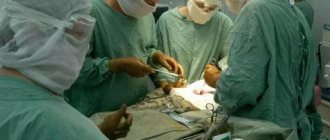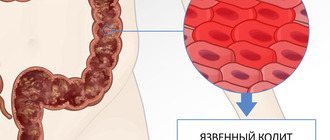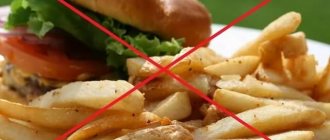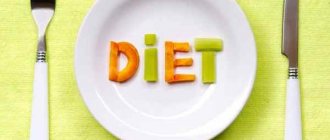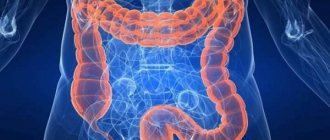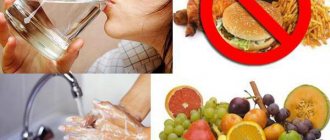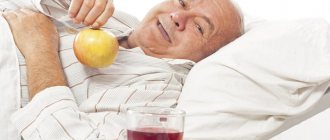Dietary nutrition is the main method of treating many diseases of the digestive tract. Diet is especially important for irritable bowel syndrome. This functional impairment of its function is directly related to the food consumed. With gentle nutrition, the causes of discomfort are eliminated. In many patients, following the diet for several months leads to complete recovery.
General rules
Irritable bowel syndrome is a functional disorder. Irritable bowel syndrome is characterized by: colicky pain in the intestines, dependence of pain on defecation (reduction after defecation), loose stools or denser stools after the onset of pain, flatulence , mucus in the stool, a feeling of incomplete bowel movement. The same complaints are typical for colitis , ulcerative colitis , Crohn's disease , and the presence of polyps.
If an examination of the intestines does not reveal any pathology, then this diagnosis is made. This condition often occurs after stress, as well as as a result of poor nutrition and activation of pathogenic microflora. Young people get sick more often. Some patients need the help of a psychotherapist, since they also have extraintestinal manifestations (mood disorders, migraine , fibromyalgia ). The treatment uses sedatives, drugs that reduce gas formation and normalize motor skills, and it is also necessary to follow dietary recommendations.
Nutrition for IBS is based on the basics of dietary Table No. 4 , which has variations. In the acute stage, diet therapy should create maximum sparing of the intestines, this is achieved by dietary Table No. 4B , in which all dishes are prepared pureed. If the condition improves, it is possible to switch to Table No. 4B , which includes unprocessed dishes. During remission, nutrition should be moderately gentle and at the same time provide the patient with all the necessary nutrients, since the diet must be followed constantly.
The diet for irritable bowel syndrome (IBS) has basic principles:
- Regular meals, long breaks are not allowed.
- Method of preparation: boiled and steam; food should be low-fat.
- Six meals a day and split meals.
- Puree dishes, pureed vegetables, meat and cereals during an exacerbation and not pureed during remission.
- Dishes and products that enhance fermentation are excluded (legumes, grapes, black bread, sweet apples, sweets, baked goods, white cabbage, bananas, cucumbers, all carbonated drinks, whole milk).
- Stimulants of bile secretion and gastric secretion (radish, celery, sorrel, radishes, mushrooms, turnips) are not allowed in the diet.
- Alcohol intake is excluded.
- Drink up to 8 glasses of liquid (limit caffeine-containing drinks and give preference to herbal teas and table water).
- Limit or exclude products containing caffeine (coffee, tea, cocoa, chocolate).
Patients should remember that a high content of fructose , lactose , oligosaccharides (fructan, galactan), silitol , sorbitol , mannitol in the diet increases rumbling, bloating and abdominal discomfort. Therefore, in case of individual intolerance, these products are also excluded from the diet:
- Lactose is found in cow, sheep and goat milk products. However, patients can normally tolerate small amounts of lactose up to 10-12 g per day (10 ml of milk contains 5 g of lactose, and a tablespoon of cottage cheese - 1 g).
- Galactans are found in legumes, chickpeas.
- Fructans contain wheat, onions, garlic, rye, all types of cabbage, fruits (peach, melon).
- Polyols (silitol, sorbitol, mannitol) - in apples, apricots, cherries, avocados and nectarines.
The type of intestinal dysfunction must be taken into account in the diet. If the disease occurs with constipation, foods and dishes that stimulate intestinal motility are introduced into the basic diet:
- Dietary fiber (dried fruits, nuts, bran, legumes, whole grain bread, whole grain and with bran), gray cereals with a high fiber content (pearl barley, barley, oatmeal, buckwheat, millet). Rice and semolina are excluded. It is better to give preference to soluble dietary fiber (pectin).
- Sour berries and fruits, all fermented milk drinks, pickled vegetables, fruit drinks.
- Products high in sugars and fructose (syrups, jams, prunes, honey).
- Daily consumption of vegetables and fruits, raw or boiled, containing fiber and cellulose in large quantities: beets, carrots, apricots, prunes, plums, melon, figs, juices with pulp.
- Cold dishes that, when consumed on an empty stomach, cause increased motor skills (cool water with honey, sweet rosehip infusion, dried fruit compote or prune infusion). The first cold dishes - okroshka, beetroot - can enhance intestinal motility.
- Vegetable oils.
- Mandatory compliance with sufficient drinking regime (1.5-2 liters of liquid).
- Unchopped foods exclude viscous porridges and pureed dishes that slowly pass through the digestive tract, as well as pasta.
- Sometimes carbonated drinks and kvass are allowed.
In case of a disease that occurs with diarrhea , on the contrary, you need to introduce products that slow down peristalsis:
- Boiled and mashed rice is low in fiber and has “fixing” properties.
- Dishes are viscous in consistency and only pureed (slimy soups, mashed potatoes and other vegetable purees, minced meat dishes, pureed porridges, jelly, jelly).
- Tanning and astringent substances of bird cherry, quince, blueberry, pear, pomegranate, lingonberry, dogwood, strong tea, coffee, cocoa brewed with water.
- Warm drinks are recommended.
At the same time, you should exclude raw fruits and vegetables, nuts, bran and whole grain bread, drinks containing caffeine and sorbitol (it is also included in chewing gum). Remember that fresh bread and rye bread, baked goods, fatty broths, soups with unprocessed vegetables, fatty meats, smoked fish, fried foods, raw fruits, berries and vegetables, sauces, spices, whole milk, legumes, increase motility and fermentation in the intestines. carbonated drinks, honey, jam, sweets.
If the disease occurs with flatulence in the diet, the following should be excluded:
- Legumes, cabbage, radishes, onions, turnips, grapes, raisins, bananas.
- Animal fats and dishes prepared with them.
- Millet and pearl barley cereals.
- Carbonated drinks, beer, kvass.
- Fatty meat and fish.
- Cream, ice cream, whole milk.
- Sugar, sweet dishes, confectionery, yeast baked goods and fresh bread, baked goods with raisins, rye bread.
- Products with food additives, dyes, sugar substitutes and sweeteners (sorbitol, aspartame).
- Avoid eating incompatible foods (carbohydrates and proteins, fruits immediately after meals). Fruits should be consumed 2 hours after the main meal.
- Do not overuse hot seasonings.
In this condition, be sure to take 2 tbsp of dill water before meals. l, courses, decoction of chamomile and mint. Taking up to 1 tbsp of flax seed can help reduce bloating. l. in a day.
Some patients have a mixed type of disorder - alternating constipation and diarrhea.
The diet for mixed type IBS during attacks with diarrhea involves limiting foods that enhance peristalsis. A possible option is Table No. 4B with the inclusion of apple and carrot puree made from raw ingredients.
During constipation, Table No. 4B , but includes foods that stimulate peristalsis. You can take cold water on an empty stomach with the addition of honey and jam. On an empty stomach and before lunch, you can drink 100 g of potato juice, include beet and plum puree twice a day, raw apples, and fermented milk drinks. You can use Diet No. 3 , but introduce each new product carefully, observing the condition of the intestines.
In case of IBS, the psycho-emotional state is normalized in parallel, which makes it possible to improve the nervous regulation of the intestines. After all, this is not a disease, but a functional state of the intestine, which has not progressed for many years.
Prohibited foods for IBS
To make it more convenient to exclude dangerous foods, you can divide all foods into groups and print a table. Then it needs to be placed in several places, for example, in the kitchen and next to the desktop. Additionally, you can copy the list of prohibited products to your smartphone.
Useful information: Bananas for diarrhea: how and when to eat for adults and children
| Product group | Foods prohibited for IBS with flatulence |
| Milk | Any yoghurts, including unsweetened ones, milk and kefir. Cream, sweet condensed milk, ice cream and other milk-based desserts are prohibited. |
| Sweets | It is strictly forbidden to eat jam with sugar and substitutes, or any confectionery products. |
| Beverages | Anything containing bubbles is prohibited. Including sparkling mineral water. Alcohol is not allowed in any quantity. It is not recommended to drink coffee. |
| Fruits and berries | Apples, apricots, grapes, peaches, pears, bananas (baked pears and apples can be used). |
| Legumes | All groups, including soy, like any soy products. |
| Vegetables and mushrooms | Mushrooms are completely prohibited. Potatoes, cabbage of all types, radishes and radishes, onions and garlic are excluded from vegetables only if they are thermally processed. |
| Meat and fish | Fatty varieties and parts, preference should be given to fillets |
| Semi-finished products | Any sauces, store-bought semi-finished meat products, smoked meats, marinades (including homemade ones). |
| Cereals | Millet, pearl barley. |
| Bakery | Baking, rye bread, yeast dough. |
| Other | Fried foods, nuts, pickles and salty foods, hard-boiled chicken and quail eggs. |
But even with large restrictions in the diet, you can choose a full menu of acceptable products.
Authorized Products
- Well-cooked cereals (barley, corn, millet and barley are excluded). Porridges are prepared with water or with the addition of milk if tolerated well. Cereals are added to soups, casseroles and puddings. Many people tolerate boiled small vermicelli and noodles well.
- Lean meat and fish are allowed, from which steamed cutlets and dumplings are prepared; fish can be eaten in pieces.
- Soups are prepared in secondary broth (meat or fish). In soups, the grains should be well boiled, they can be mashed, and the vegetables should be finely chopped before cooking.
- You can add potatoes, carrots, cauliflower and zucchini to first courses. And only if well tolerated - green peas, white cabbage, beets. It is allowed to add meatballs or minced meat.
- Dried or stale wheat bread, the use of dry cookies or biscuits is allowed.
- As a side dish, you can eat boiled vegetables, finely chopping them; vegetable cutlets and vegetable stew are also allowed. During the remission stage, you can carefully introduce fresh vegetables (ripe tomatoes and cucumbers) without skins.
- Milk and cream are used as an additive to dishes when preparing porridges and stewing vegetables. If well tolerated, use whole milk. Fermented milk products are considered the main ones in the diet, which you need to choose according to your preferences and tolerance. Cottage cheese and dishes made from it should be introduced daily. Butter is added to dishes and can be eaten with bread (10-15 g per serving).
- Soft-boiled eggs or omelettes.
- The use of fruit marmalade, marshmallows, jam, and honey is allowed. You can eat ripe fruits raw, but without the peel (pears, apples, strawberries or raspberries up to 200 g per day). Apples can be baked or prepared into jellies and compotes.
- You can consume all juices, but in diluted form (grape and cabbage juices are excluded).
- Rosehip infusion and weak tea with added milk are allowed.
Table of permitted products
| Proteins, g | Fats, g | Carbohydrates, g | Calories, kcal | |
Vegetables and greens | ||||
| zucchini | 0,6 | 0,3 | 4,6 | 24 |
| cauliflower | 2,5 | 0,3 | 5,4 | 30 |
| potato | 2,0 | 0,4 | 18,1 | 80 |
| carrot | 1,3 | 0,1 | 6,9 | 32 |
| parsley | 3,7 | 0,4 | 7,6 | 47 |
| beet | 1,5 | 0,1 | 8,8 | 40 |
| dill | 2,5 | 0,5 | 6,3 | 38 |
| green beans | 2,8 | 0,4 | 8,4 | 47 |
Fruits | ||||
| pears | 0,4 | 0,3 | 10,9 | 42 |
| apples | 0,4 | 0,4 | 9,8 | 47 |
Nuts and dried fruits | ||||
| dried pears | 2,3 | 0,6 | 62,6 | 249 |
Cereals and porridges | ||||
| buckwheat (kernel) | 12,6 | 3,3 | 62,1 | 313 |
| semolina | 10,3 | 1,0 | 73,3 | 328 |
| oat groats | 12,3 | 6,1 | 59,5 | 342 |
| cereals | 11,9 | 7,2 | 69,3 | 366 |
| white rice | 6,7 | 0,7 | 78,9 | 344 |
Flour and pasta | ||||
| noodles | 12,0 | 3,7 | 60,1 | 322 |
Bakery products | ||||
| white bread crackers | 11,2 | 1,4 | 72,2 | 331 |
Confectionery | ||||
| jam | 0,3 | 0,2 | 63,0 | 263 |
| jam | 0,3 | 0,1 | 56,0 | 238 |
| marshmallows | 0,8 | 0,0 | 78,5 | 304 |
| fruit and berry marmalade | 0,4 | 0,0 | 76,6 | 293 |
| meringues | 2,6 | 20,8 | 60,5 | 440 |
| paste | 0,5 | 0,0 | 80,8 | 310 |
| Maria cookies | 8,7 | 8,8 | 70,9 | 400 |
Dairy | ||||
| skim milk | 2,0 | 0,1 | 4,8 | 31 |
| kefir | 3,4 | 2,0 | 4,7 | 51 |
| sour cream | 2,8 | 20,0 | 3,2 | 206 |
| acidophilus | 2,8 | 3,2 | 3,8 | 57 |
Cheeses and cottage cheese | ||||
| cheese | 24,1 | 29,5 | 0,3 | 363 |
| cottage cheese | 17,2 | 5,0 | 1,8 | 121 |
Meat products | ||||
| boiled beef | 25,8 | 16,8 | 0,0 | 254 |
| boiled veal | 30,7 | 0,9 | 0,0 | 131 |
| rabbit | 21,0 | 8,0 | 0,0 | 156 |
Bird | ||||
| boiled chicken | 25,2 | 7,4 | 0,0 | 170 |
| turkey | 19,2 | 0,7 | 0,0 | 84 |
Oils and fats | ||||
| butter | 0,5 | 82,5 | 0,8 | 748 |
Non-alcoholic drinks | ||||
| mineral water | 0,0 | 0,0 | 0,0 | — |
| green tea | 0,0 | 0,0 | 0,0 | — |
| black tea | 20,0 | 5,1 | 6,9 | 152 |
Juices and compotes | ||||
| Orange juice | 0,9 | 0,2 | 8,1 | 36 |
| Cherry juice | 0,7 | 0,0 | 10,2 | 47 |
| Strawberry juice | 0,6 | 0,4 | 7,0 | 31 |
| tangerine juice | 0,8 | 0,3 | 8,1 | 36 |
| carrot juice | 1,1 | 0,1 | 6,4 | 28 |
| tomato juice | 1,1 | 0,2 | 3,8 | 21 |
| pumpkin juice | 0,0 | 0,0 | 9,0 | 38 |
| Apple juice | 0,4 | 0,4 | 9,8 | 42 |
| * data is per 100 g of product | ||||
Nutrition for pain
The diet rules for irritable bowel syndrome with severe painful spasms are somewhat similar to the diet for diarrhea. Eating should be done every three hours, except for sleep breaks. Serving volumes should not exceed two hundred grams.
The diet for painful spasms includes:
- It is best to replace tea and coffee with herbal infusions;
- exclusion of whole milk, dairy and fermented milk products;
- refusal of nuts, seeds, bran and mushrooms;
- a ban on pasta and baked goods, legumes and sweets;
- eating eggs only boiled;
- minimizing the consumption of grapes and bananas, cabbage and onions;
- eating strawberries and persimmons, peaches and pears, apples and avocados;
- eat boiled potatoes, carrots, onions and beets;
- steaming dietary meats and fish.
In addition, patients should note that in order to obtain a complete list of all permitted and prohibited products, they should contact their doctor. Independent introduction of new products to the menu can aggravate the irritating effect on the stomach, which will affect a person’s well-being. The clinician also provides sample menus and recipes for meals. Plus, patients may not expect the positive effects of the diet if they continue their addiction to addictions.
Fully or partially limited products
- Dishes that stimulate secretion are strong and fatty broths.
- Products and dishes that increase fermentation in the intestines (beer, legumes, rye bread, fresh baked goods, vegetables with coarse fiber, wholemeal flour, kvass, carbonated water).
- Vegetables containing irritating essential oils (such as radish, garlic, celery, onions, spinach, radishes).
- It is prohibited to consume spicy foods, fatty meats and poultry, hot sauces, canned meat and fish, mustard, smoked meats, horseradish, pepper, and all meat products. If desired and rarely, you can eat boiled sausage and frankfurters.
- Cooking fat, millet, pearl barley, corn, barley, pork and beef fat, margarine are excluded.
- The consumption of chocolate, ice cream, cakes, grape juice, cabbage juice, kvass, carbonated fruit drinks and cold drinks is not allowed.
Table of prohibited products
| Proteins, g | Fats, g | Carbohydrates, g | Calories, kcal | |
Vegetables and greens | ||||
| vegetables legumes | 9,1 | 1,6 | 27,0 | 168 |
| swede | 1,2 | 0,1 | 7,7 | 37 |
| cucumbers | 0,8 | 0,1 | 2,8 | 15 |
| parsnip | 1,4 | 0,5 | 9,2 | 47 |
| parsley (root) | 1,5 | 0,6 | 10,1 | 49 |
| radish | 1,2 | 0,1 | 3,4 | 19 |
| white radish | 1,4 | 0,0 | 4,1 | 21 |
| turnip | 1,5 | 0,1 | 6,2 | 30 |
| celery | 0,9 | 0,1 | 2,1 | 12 |
| horseradish | 3,2 | 0,4 | 10,5 | 56 |
| garlic | 6,5 | 0,5 | 29,9 | 143 |
| spinach | 2,9 | 0,3 | 2,0 | 22 |
| sorrel | 1,5 | 0,3 | 2,9 | 19 |
Fruits | ||||
| bananas | 1,5 | 0,2 | 21,8 | 95 |
| melon | 0,6 | 0,3 | 7,4 | 33 |
Berries | ||||
| grape | 0,6 | 0,2 | 16,8 | 65 |
Mushrooms | ||||
| mushrooms | 3,5 | 2,0 | 2,5 | 30 |
Nuts and dried fruits | ||||
| dried fruits | 2,3 | 0,6 | 68,2 | 286 |
Cereals and porridges | ||||
| pearl barley | 9,3 | 1,1 | 73,7 | 320 |
| Wheat groats | 11,5 | 1,3 | 62,0 | 316 |
| millet cereal | 11,5 | 3,3 | 69,3 | 348 |
| barley grits | 10,4 | 1,3 | 66,3 | 324 |
Flour and pasta | ||||
| pasta | 10,4 | 1,1 | 69,7 | 337 |
Bakery products | ||||
| vysivkovy bread | 9,0 | 2,2 | 36,0 | 217 |
| Old Russian grain bread | 9,6 | 2,7 | 47,1 | 252 |
| Rye bread | 6,6 | 1,2 | 34,2 | 165 |
Confectionery | ||||
| candies | 4,3 | 19,8 | 67,5 | 453 |
| Kurabye cookies | 6,7 | 25,8 | 64,6 | 516 |
| butter cookies | 10,4 | 5,2 | 76,8 | 458 |
Ice cream | ||||
| ice cream | 3,7 | 6,9 | 22,1 | 189 |
Cakes | ||||
| cake | 4,4 | 23,4 | 45,2 | 407 |
Chocolate | ||||
| chocolate | 5,4 | 35,3 | 56,5 | 544 |
Raw materials and seasonings | ||||
| seasonings | 7,0 | 1,9 | 26,0 | 149 |
| mustard | 5,7 | 6,4 | 22,0 | 162 |
Meat products | ||||
| pork | 16,0 | 21,6 | 0,0 | 259 |
Sausages | ||||
| dry-cured sausage | 24,1 | 38,3 | 1,0 | 455 |
Bird | ||||
| duck | 16,5 | 61,2 | 0,0 | 346 |
| goose | 16,1 | 33,3 | 0,0 | 364 |
Fish and seafood | ||||
| dried fish | 17,5 | 4,6 | 0,0 | 139 |
| smoked fish | 26,8 | 9,9 | 0,0 | 196 |
| Red caviar | 32,0 | 15,0 | 0,0 | 263 |
| black caviar | 28,0 | 9,7 | 0,0 | 203 |
| canned fish | 17,5 | 2,0 | 0,0 | 88 |
Oils and fats | ||||
| animal fat | 0,0 | 99,7 | 0,0 | 897 |
| cooking fat | 0,0 | 99,7 | 0,0 | 897 |
Non-alcoholic drinks | ||||
| bread kvass | 0,2 | 0,0 | 5,2 | 27 |
| black tea | 20,0 | 5,1 | 6,9 | 152 |
Juices and compotes | ||||
| apricot juice | 0,9 | 0,1 | 9,0 | 38 |
| grape juice | 0,3 | 0,0 | 14,0 | 54 |
| plum juice | 0,8 | 0,0 | 9,6 | 39 |
| * data is per 100 g of product | ||||
Menu (Power Mode)
With 6 meals a day, you can create a menu. In case of irritable intestines, during an exacerbation, you need to prepare boiled and steamed dishes, and during remission, you need to diversify the table with baked ones. For breakfast it is better to prepare milk porridge. Every other day, include eggs. If raw vegetables are poorly tolerated, they can be replaced with boiled or stewed ones. The amount of raw fruits should also be kept to a minimum - 80-100 g per meal.
| Breakfast |
|
| Lunch |
|
| Dinner |
|
| Afternoon snack |
|
| Dinner |
|
| For the night |
|
| Breakfast |
|
| Lunch |
|
| Dinner |
|
| Afternoon snack |
|
| Dinner |
|
| For the night |
|
| Breakfast |
|
| Lunch |
|
| Dinner |
|
| Afternoon snack |
|
| Dinner |
|
| For the night |
|
Reviews and results
With this diagnosis, the first thing you need to do is adjust your diet. Small meals with the exception of foods that cause discomfort will alleviate the general condition. To determine poor food tolerance, you can keep a food diary. As for the severity of the diet, after the symptoms improve and disappear, you need to introduce other foods and observe the reaction. The food is quite varied and does not cause a sharply negative attitude towards it. Many are forced to constantly adhere to it.
- “... I just have a mixed type of IBS - diarrhea occurs after several days of constipation. If you manage to establish daily bowel movements, then everything is fine, and there is also no flatulence. Enzymes, lactobacilli, decoction of fennel, mint, and chamomile help well. Among the foods that improve bowel movements are stewed carrots and boiled beets, persimmons, bananas, and apples. And during the watermelon season, everything is generally wonderful. Of course, I excluded fatty and fried foods, spices and spicy foods, mayonnaise and all kinds of industrial sauces. If I eat right, I feel good. I have already adapted and selected a diet that does not cause exacerbations”;
- “... The diet helped with exacerbations (diarrhea is not always, but is provoked by nervous overexertion and drinking tea or coffee - spasm, pain and the urge to go to the toilet occur). I cook everything in a double boiler, I tolerate fermented milk products well, I only eat stewed vegetables and add cream to them (very tasty). I'm afraid to eat fresh vegetables and even soft fruits, since previous attempts to introduce them ended in diarrhea. Now everything is fine - there have been no exacerbations for a long time, I try not to be nervous and take sedatives. In general, I studied myself and the intestinal reaction, so I have adapted to nutrition over many years and am teaching the whole family”;
- “... I constantly follow a diet, as I am worried about flatulence with constipation and pain in the intestines. I induce morning urges by drinking water on an empty stomach, if that doesn’t help, then I eat porridge with prunes. After several bowel movements there is no feeling of emptying, and flatulence bothers you all day and gets worse in the evening. With dietary nutrition, these problems are significantly reduced.”
How to eat with irritable bowel syndrome
Most patients with irritable bowel syndrome suffer from colicky pain syndrome. For this pathology, treatment table No. 3 is recommended. It is indicated for all patients with chronic diseases of the gastrointestinal tract and biliary tract. This diet is also useful for constipation and hemorrhoids.
In the case of pain due to IBS, table No. 3 helps reduce the processes of putrefaction in the intestines. The basic principles of this diet:
- pay attention to butter and vegetable oils;
- eat meat and fish dishes;
- eat eggs only hard-boiled;
- eat cold food, avoid hot dishes completely;
- for painful stools, eat pureed or boiled vegetables, finely chopped and boiled meat;
- if you have flatulence, avoid watermelon, cabbage, potatoes, grapes, bread and milk;
- To improve intestinal permeability, eat beets, carrots, and prunes.
A diet for irritable bowel syndrome involves eating up to 6 times a day, but in small portions. If you have diarrhea, you should pay attention to strengthening products, such as:
- strong tea or coffee;
- crackers;
- cocoa;
- oat broth;
- mashed cottage cheese;
- blueberry broth
- What to do if your tooth hurts very badly
- How to collect urine from a baby boy
- Acute coronary insufficiency
Meals must be regular. You can’t make absences, even at work. To eat regularly, you should take containers of food with you. An alarm clock will help you not to miss your snack time. A few more principles of the diet for pain associated with IBS:
- Keep an interval of 3 hours between meals.
- The last time to eat is no later than 3 hours before going to bed.
- Have a light dinner, otherwise indigestion and heaviness in the stomach will occur, which will only intensify the pathological symptoms.
- Drink at least 1.5-2 liters of clean water per day.
- Use a food diary to track foods that trigger your irritable bowel syndrome.


